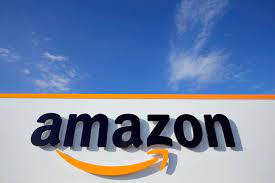Short Intro
If you sell anything on Amazon, one of the most important things you’ll need to figure out is how to do product research. If you want to make the most money possible, this process can’t be skipped over – it needs to be done carefully and well. Fortunately, there are some amazing tools out there that can help you do this in the best way possible so that you can ensure you’re offering high-quality products that will get you sales!01-What are Organic Keywords?
The best and most cost-effective way to advertise on Amazon is through their sponsored product ads. These are normally shown on either side of your search results, or next to your categories. When someone searches for a keyword you bid on (say: shoes), your ad could be shown alongside other sellers' ads. If someone clicks through and buys something, you'll pay around $0.20 per click, but if they end up buying something you're selling (at full price), then it's free money! Note that while these advertisements can get very expensive in some categories, they're actually priced much lower than Google Adwords - plus people tend to research products more seriously when shopping online.
02-How to Find Organic Keywords
When people search for information online, they are looking for two things: 1) information and 2) a solution to their problem. Your goal as an online marketer is to present something that provides both of these things. In order to find keywords for your website, you need to determine what people are searching for and then try to think of ways you can provide them with that information AND solve their problem at the same time. A useful tool in your keyword research arsenal is Keyword Planner by Google AdWords.
03-How Many Organic Keywords Should I Have?
I recently did some research on finding keywords for a product I wanted to sell. During my research, I read that there is an optimal amount of Keywords per page. In fact, Google says there should be 5-6 words on each page of content, which comes out to a total of at least 100-150 words if you are writing more than one page of content about your product. If you have less than 100 words in your content and it’s supposed to be a top-level category page, it’s safe to say that you have too few keywords for Google to trust your website.
04-Examples of Strong Pages for Each Type of Keyword
If you have a clear target audience in mind, type that keyword into a search bar. Now look at what shows up. Use that information to determine what your content should be about, how it should be structured and how you can incorporate keywords within each piece of content. For example, if your site is intended for new parents and your target keyword is baby registry, then you may want to create content around topics like baby registry checklist, how to find a baby shower or shopping guide. These types of pages will often rank well because they focus on providing useful information specific to their audiences without having too much marketing fluff included. If your audience has an issue they're consistently searching for answers on, chances are that many other people are looking for those same answers.
05-Why Do I Need SEO?
Search engine optimization (SEO) is one of those buzzwords that gets thrown around a lot these days, but few people really understand what it means. Even fewer are able to do SEO themselves; most just think they can write some content and throw it up there and their job is done. This isn’t true: if you want to be found on Google, you need proper SEO—but that doesn’t mean your job is easy. It can be time-consuming and tedious work; however, these same factors make it an incredibly valuable skill to have. The problem is that many who have business ideas don’t realize just how important SEO skills are—and even fewer know where to go for training.
06-How Do I Use the SEO Checker on Seller Central?
If you’re thinking about launching a new product on Amazon or want to find a competitor’s ranking, there are two tools that you need to know about: The SEO Checker and the Keyword Planner. Both tools can be found within Seller Central. While there are a lot of different metrics that can be pulled from these tools, I’m going to focus on how they can help with product research and inbound marketing.
07-How Do I Get My Product Details Up To Par?
One of my favorite aspects of shopping on Amazon is that you can read reviews by other customers. It’s a quick way to get an honest overview of how products work. But here’s a secret: most of those product descriptions aren’t very informative or helpful. If you want to stand out from your competitors and attract more clicks, make sure that your product descriptions are as detailed as possible. And don’t stop at just listing features—include all available specifications, including dimensions, materials, shipping restrictions and anything else that might be relevant to potential buyers.
08-Is There A Way To See If There's Duplicate Content On My Page?
It's a good idea to audit your website periodically and ensure that you're not paying a Google penalty because of duplicate content. The easiest way to do so is with an online audit tool such as Copy scape, which lets you plug in a URL and see if there are any matches. (Copy scape will also show you how many times text on your site has been used elsewhere online.) If Google finds duplicate content when it crawls your site, then it could take action against your website—and even remove it from its search results—due to violation of its terms of service. So let Copy scape help you avoid headaches and wasted time.


0 Comments
If you have any dout let me know